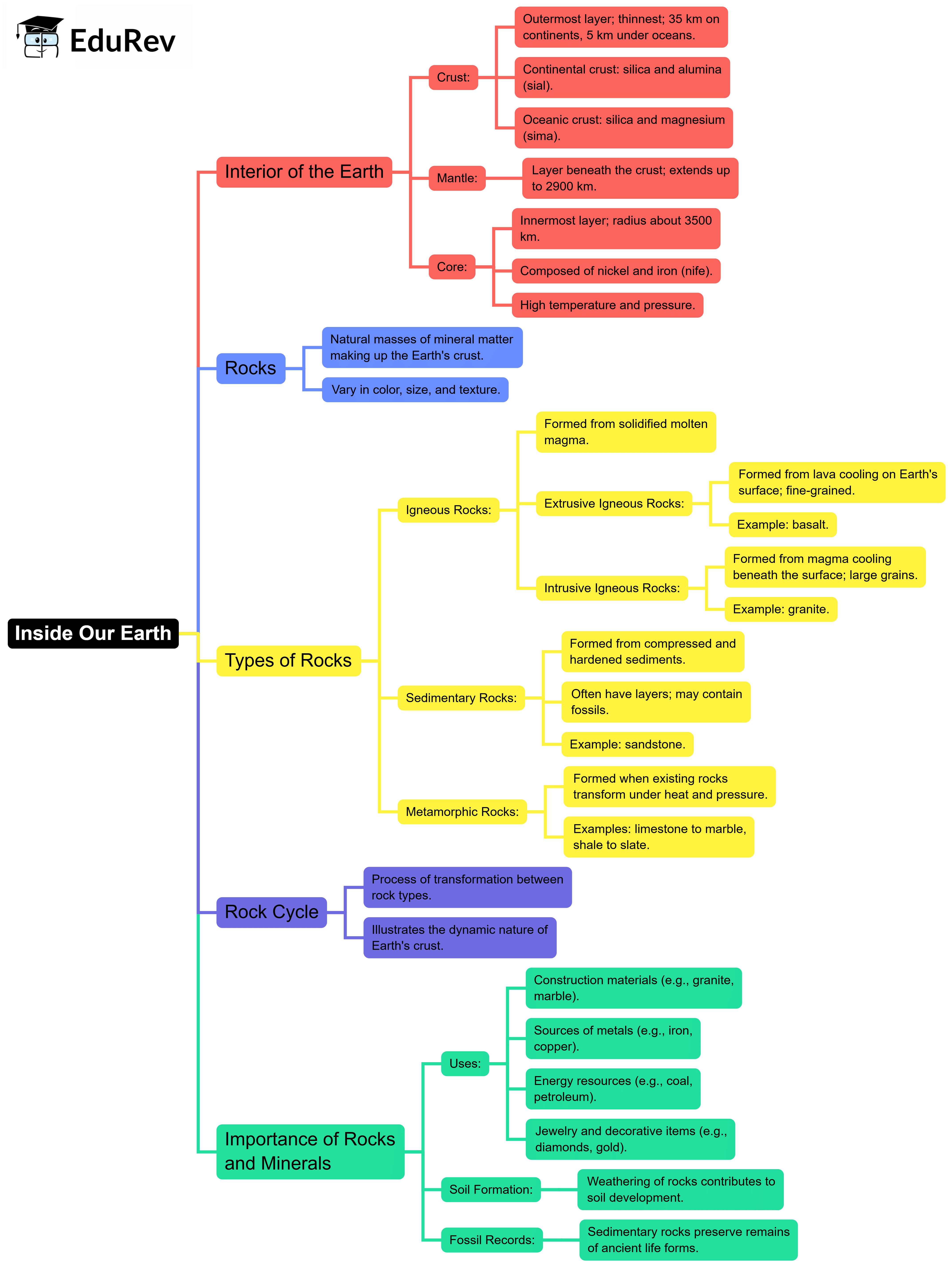Class 7 Exam > Class 7 Notes > Social Studies (SST) Class 7 (Old NCERT) > Mind Map: Inside our Earth
Mind Map: Inside our Earth | Social Studies (SST) Class 7 (Old NCERT) PDF Download

The document Mind Map: Inside our Earth | Social Studies (SST) Class 7 (Old NCERT) is a part of the Class 7 Course Social Studies (SST) Class 7 (Old NCERT).
All you need of Class 7 at this link: Class 7
|
63 videos|371 docs|46 tests
|
FAQs on Mind Map: Inside our Earth - Social Studies (SST) Class 7 (Old NCERT)
| 1. What are the main layers of the Earth and their characteristics? |  |
Ans. The Earth is composed of three main layers: the crust, the mantle, and the core. The crust is the outermost layer, which is solid and relatively thin. It includes the continents and ocean floors. The mantle lies beneath the crust and is made up of semi-solid rock that flows slowly, allowing tectonic plates to move. The core is divided into the outer core, which is liquid and composed mainly of iron and nickel, and the inner core, which is solid and extremely hot, also made primarily of iron and nickel.
| 2. How do tectonic plates move and what causes earthquakes? |  |
Ans. Tectonic plates move due to the convection currents in the mantle beneath them. These currents are caused by the heat from the Earth's core. When plates collide, slide past each other, or pull apart, stress builds up at their boundaries. When this stress exceeds the strength of the rocks, it results in an earthquake. The place where the earthquake originates is called the focus, and the point directly above it on the Earth's surface is known as the epicenter.
| 3. What is the significance of the Earth's magnetic field? |  |
Ans. The Earth's magnetic field is crucial for life on our planet. It protects the Earth from harmful solar radiation and cosmic rays. The field is generated by the movement of molten iron in the outer core, creating a dynamo effect. Additionally, the magnetic field helps in navigation for various species, including birds and humans, by providing a natural compass.
| 4. What role do volcanoes play in shaping the Earth's surface? |  |
Ans. Volcanoes play a significant role in shaping the Earth's surface by creating new landforms. When a volcano erupts, it releases magma that can solidify into new rock formations, such as mountains and islands. Volcanic eruptions also contribute to the soil's fertility, enriching it with minerals. However, they can also cause destruction and pose risks to nearby communities.
| 5. How do scientists study the interior of the Earth? |  |
Ans. Scientists study the Earth's interior using various methods, primarily seismic waves generated by earthquakes. By analyzing the speed and behavior of these waves as they travel through different layers, scientists can infer the composition and state of the Earth's interior. Other methods include studying magnetic fields, gravity, and the behavior of materials under extreme conditions in laboratories.
Related Searches





















